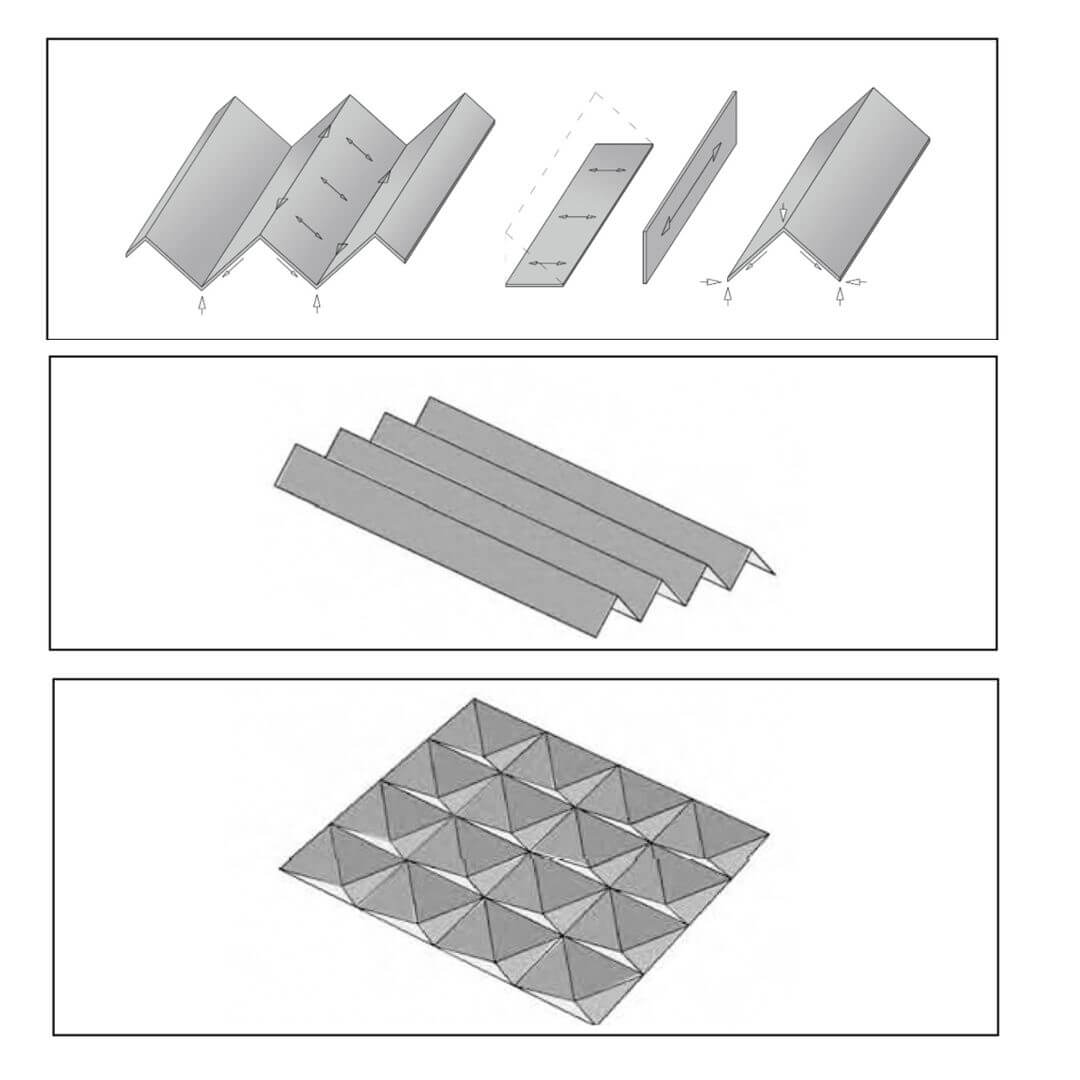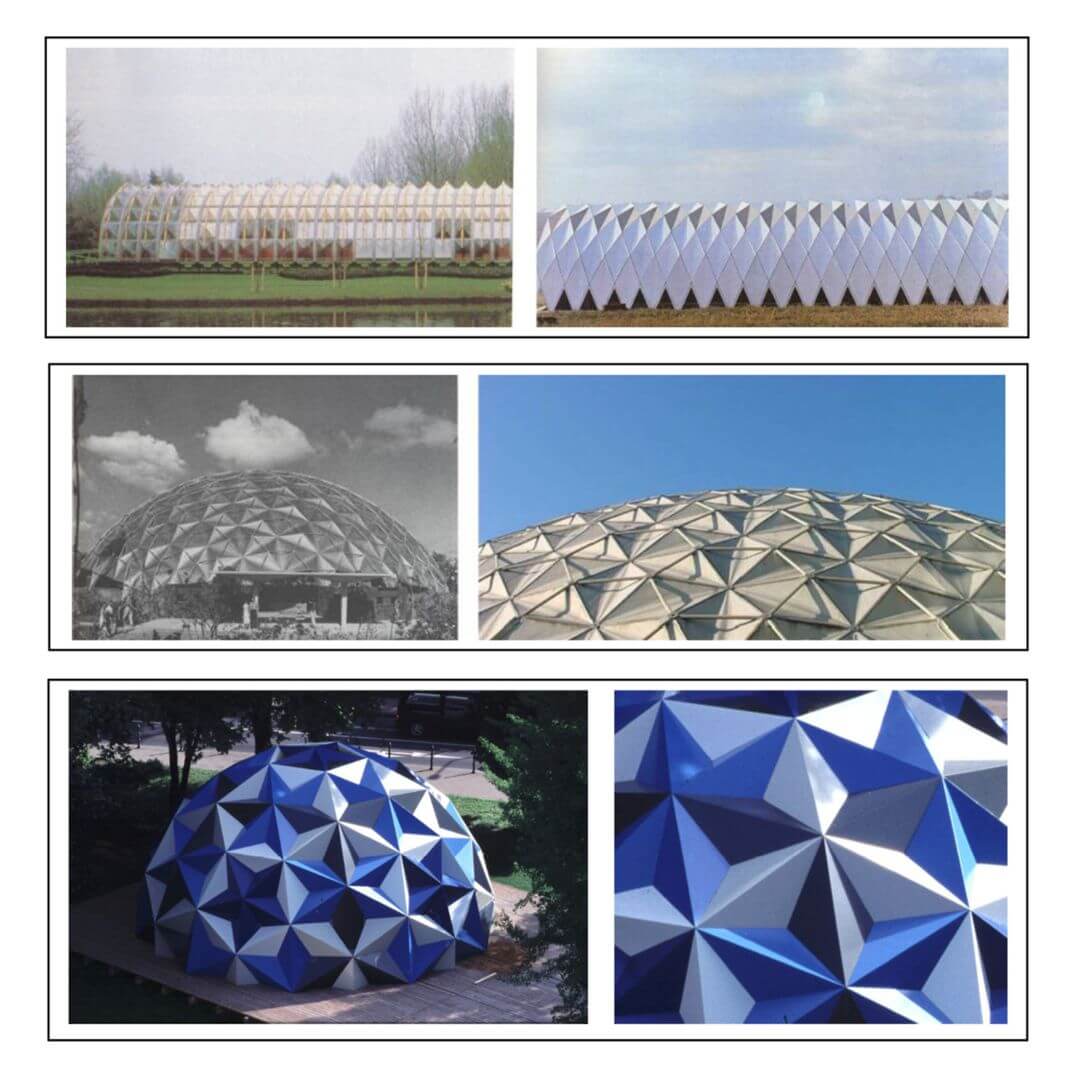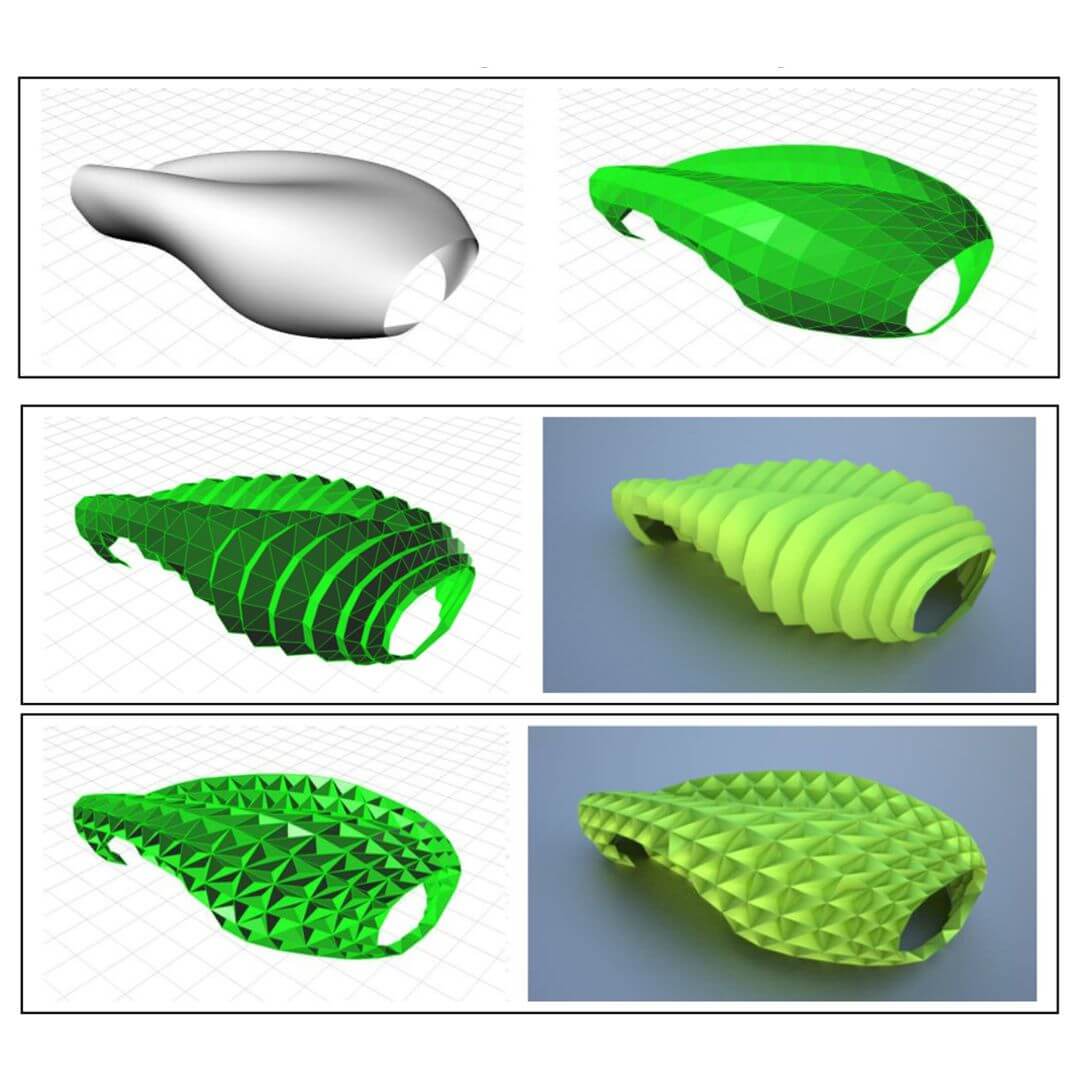Folded Plate Principles
Proceedings of the International Association for Shell and Spatial Structures (2009)
Univ.-Prof. Dr.-Ing Martin TRAUTZ, Dipl.-Ing. Ralf HERKRATH
 The two main folding plate principles of pointed folding plates forming an facet texture and longitudinal folding plates forming the typical fold texture imply different fields of application in architecture and structural engineering. This Paper presents a method of developing the folding plate principles on spatial structures also with irregular and freeform geometries. Hereby algorithms of triangulation, originally applied in finite elements analysis, are used for discretisation and form-finding of the textures of folded plate shells.
The two main folding plate principles of pointed folding plates forming an facet texture and longitudinal folding plates forming the typical fold texture imply different fields of application in architecture and structural engineering. This Paper presents a method of developing the folding plate principles on spatial structures also with irregular and freeform geometries. Hereby algorithms of triangulation, originally applied in finite elements analysis, are used for discretisation and form-finding of the textures of folded plate shells.
 In flora and fauna, the principle of folding is often found to create widespread, structural surfaces. It generates not only a stabilisation of flat and delicate shapes, it is also necessary to exercise complex and reversible movements.
In flora and fauna, the principle of folding is often found to create widespread, structural surfaces. It generates not only a stabilisation of flat and delicate shapes, it is also necessary to exercise complex and reversible movements.

Folding systems represent one category of plane structural surfaces, alongside with plates and slabs. Their special structural behaviour is due to their structural subdivision arrangement in pairs which correlate with each other and so they are connected through a shear connection. The structural characteristics of folding structures depend on the shape of the folding (longitudinal or pyramidal), on their geometrical basic shape (plane, hoppit, cupola, free-from), on its material (concrete, timber, metal, synthetics), on the connection of the different folding planes and on the design of the bearings. The characteristics of the folding structures are interactiv related to each other.of performance-based design in early design phases, with the purpose to take better-informed decisions which would ultimately contribute to improve the energy performance of buildings.




























Comments